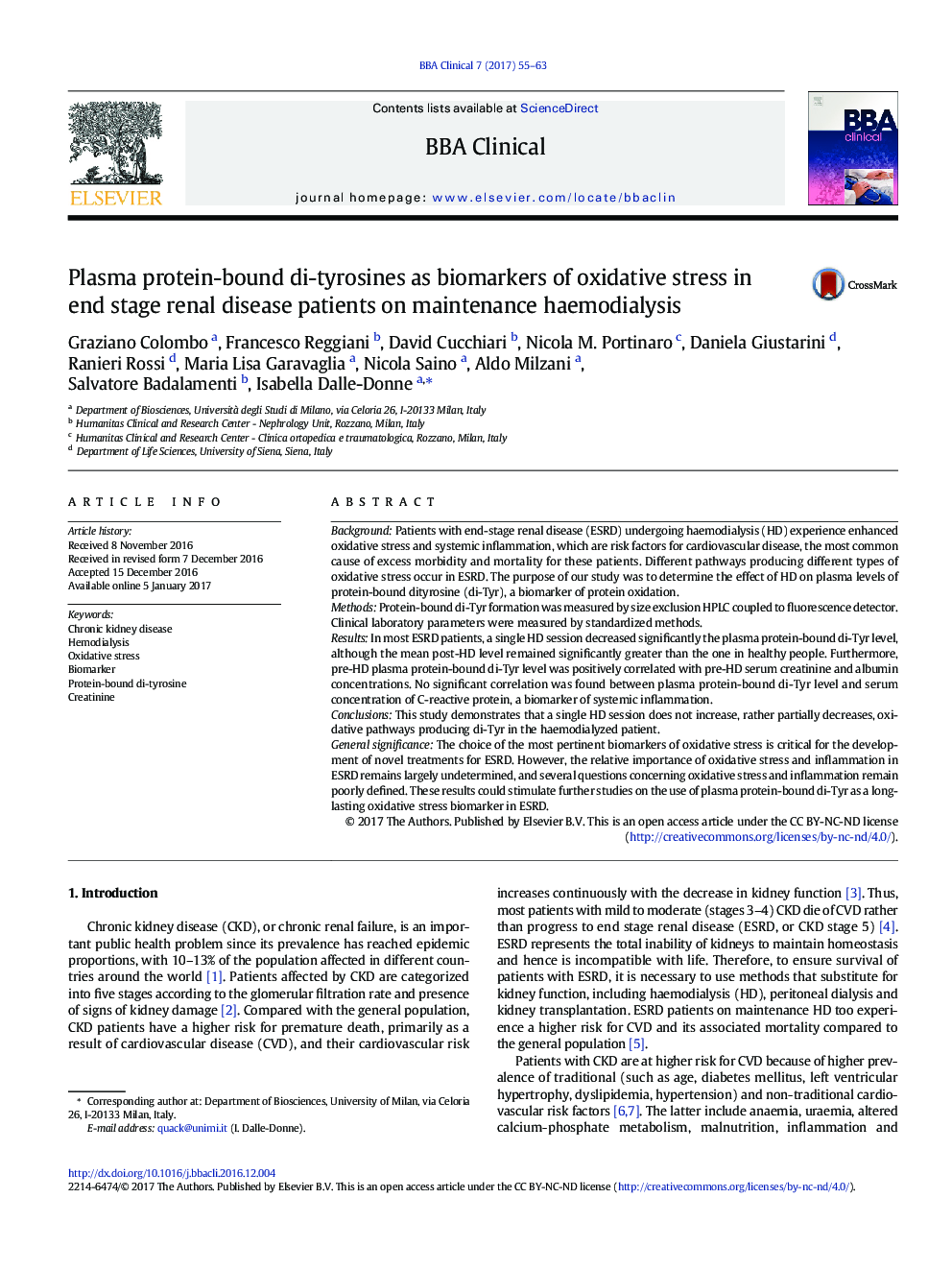| کد مقاله | کد نشریه | سال انتشار | مقاله انگلیسی | نسخه تمام متن |
|---|---|---|---|---|
| 5584301 | 1567895 | 2017 | 9 صفحه PDF | دانلود رایگان |
- Haemodialyzed patients experience oxidative stress and systemic inflammation.
- We assessed haemodialysis (HD) effect on plasma protein-bound dityrosine (di-Tyr).
- In most patients, a single HD session decreased significantly the di-Tyr level.
- Pre-HD di-Tyr level was positively correlated with those of creatinine and albumin.
- No correlation was found between di-Tyr level and C-reactive protein concentration.
BackgroundPatients with end-stage renal disease (ESRD) undergoing haemodialysis (HD) experience enhanced oxidative stress and systemic inflammation, which are risk factors for cardiovascular disease, the most common cause of excess morbidity and mortality for these patients. Different pathways producing different types of oxidative stress occur in ESRD. The purpose of our study was to determine the effect of HD on plasma levels of protein-bound dityrosine (di-Tyr), a biomarker of protein oxidation.MethodsProtein-bound di-Tyr formation was measured by size exclusion HPLC coupled to fluorescence detector. Clinical laboratory parameters were measured by standardized methods.ResultsIn most ESRD patients, a single HD session decreased significantly the plasma protein-bound di-Tyr level, although the mean post-HD level remained significantly greater than the one in healthy people. Furthermore, pre-HD plasma protein-bound di-Tyr level was positively correlated with pre-HD serum creatinine and albumin concentrations. No significant correlation was found between plasma protein-bound di-Tyr level and serum concentration of C-reactive protein, a biomarker of systemic inflammation.ConclusionsThis study demonstrates that a single HD session does not increase, rather partially decreases, oxidative pathways producing di-Tyr in the haemodialyzed patient.General significanceThe choice of the most pertinent biomarkers of oxidative stress is critical for the development of novel treatments for ESRD. However, the relative importance of oxidative stress and inflammation in ESRD remains largely undetermined, and several questions concerning oxidative stress and inflammation remain poorly defined. These results could stimulate further studies on the use of plasma protein-bound di-Tyr as a long-lasting oxidative stress biomarker in ESRD.
96
Journal: BBA Clinical - Volume 7, June 2017, Pages 55-63
